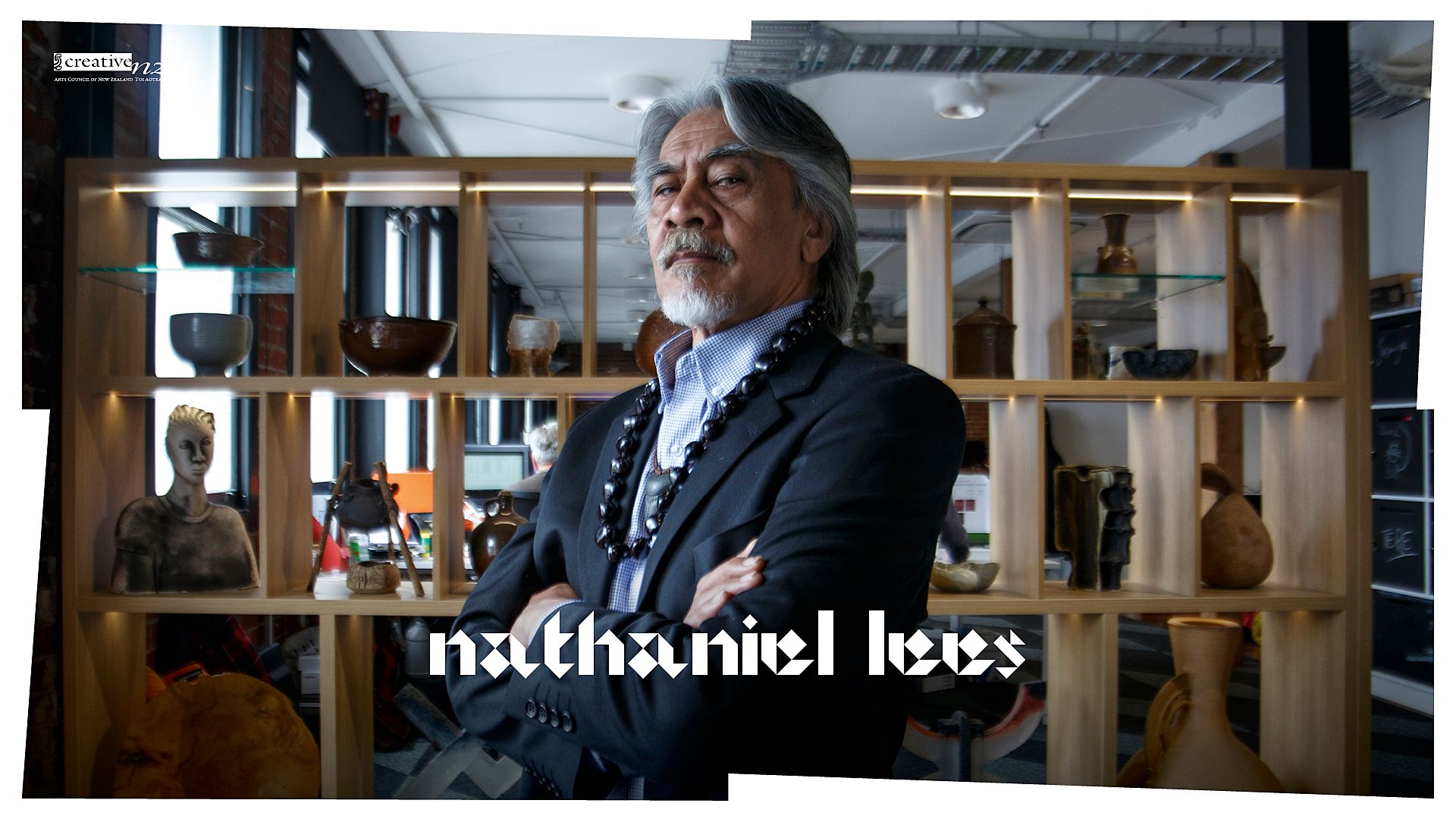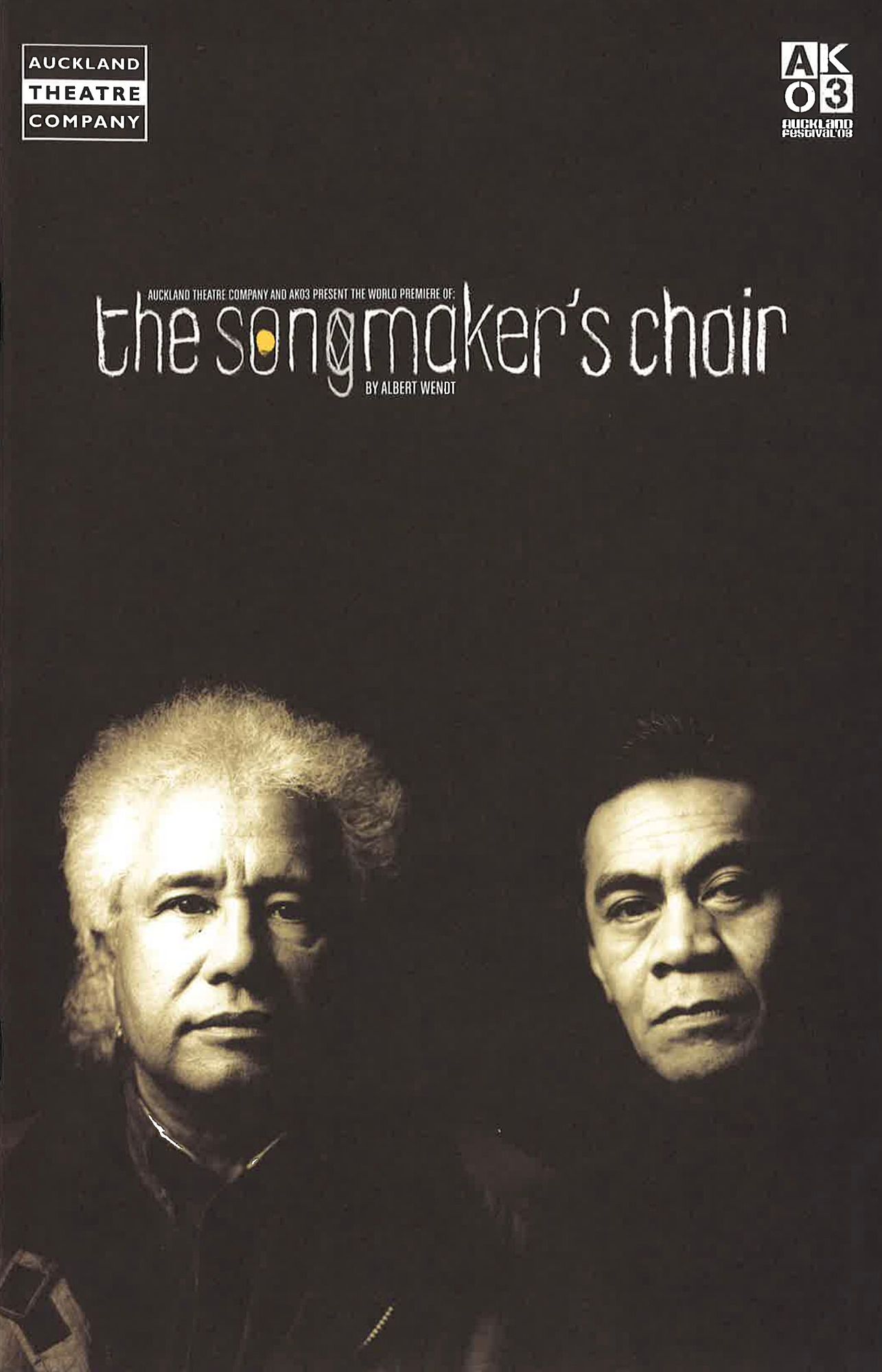Weaving Ourselves into Aotearoa Theatre
Theatre director Maiava Nathaniel Lees remembers four seminal works that played a part in weaving Pacific theatre into the arts fabric of Aotearoa.
We’re collaborating with Creative New Zealand to bring you the groundbreaking Pacific Arts Legacy Project. Curated by Lana Lopesi as project Editor-in-Chief, it’s a foundational history of Pacific arts in Aotearoa as told from the perspective of the artists who were there.
Between 1992 and 2004, Maiava Nathaniel Lees directed 'Think of a Garden', 'Fresh off the Boat', 'A Frigate Bird Sings' and 'The Songmaker’s Chair'. All four seminal works played a part in weaving Pacific theatre into the national arts fabric of Aotearoa. Maiava remembers them here.
There was a period in the early 1990s when our ability to see ourselves as Pacific artists and performers changed from being predominantly followers and supporters of our fellow tangata whenua storytellers to establishing our own weave in the fabric of theatre in Aotearoa.
During this period there were several of us of Pacific heritage at different stages of our careers, in different media, making our way through the arts landscape of Aotearoa. However, Pacific Island stories in mainstream theatre were almost non-existent and there were very few of us working as actors in theatre.
In this piece, I will focus on four theatre productions during that period of growth and expansion that I was blessed to have been involved in.
In 1992 I was invited to be part of the Aotearoa delegation to the Australasian Playwrights Forum in Canberra, Australia. I was very busy at the time doing theatre and television work so I declined the invitation, as it meant I would be in Australia for nearly two weeks.
The New Zealand Arts Council at the time asked me to reconsider, as there was a particular reading that they wanted me to be part of. I asked them to send me the script to read and then I would decide. The script arrived and I read it. The story had such an effect on me that I knew that I was going to Australia to share in the telling of this story.
The script was a new play written by Sāmoan writer John Kneubuhl. It was Think of a Garden.
I knew within myself that this play would hold a pivotal position in the future of Pacific Island storytelling in Aotearoa. The subject matter and the extraordinary quality of the writing was something that had not yet been seen in our endeavours to tell Pacific Island stories in Aotearoa.
there are many of this generation in Aotearoa who have no knowledge of these events in Sāmoa, and the way those events profoundly affected the life and future of Sāmoa.
On returning to Aotearoa after a very emotional reading in Canberra in January, I knew that this story needed to be told here. And it needed to be directed by someone with an understanding of the fa’a Sāmoa aspects of the story and also what would be required to stage it. After consultation with other actors, artists and leaders in the Pacific community, it was decided that I would make my directorial debut in this first full production of Think of a Garden by John Kneubuhl at Watershed Theatre in Auckland in 1993. John Kneubuhl never got to see this work in its full form, passing away in February 1992.
The critical success and overwhelming audience response from the Pacific Island community to our production in Auckland is documented, but my personal experiences in the journey highlighted several elements that I had to overcome to bring the story to the stage.
The subject matter of the fatal shooting of Tupua Tamasese Lealofi III by New Zealand police on 28 December 1929 divided a generation of Sāmoans, both in Sāmoa and here in Aotearoa. I was asked several times by leading family matai what would be the good of showing this story to the Pālagi. I had to sit down with ministers of Sāmoan churches to explain why I was bringing this story into the light. My answer to them was that there are many of this generation in Aotearoa who have no knowledge of these events in Sāmoa, and the way those events profoundly affected the life and future of Sāmoa. Truth about our history needed to be told and the effects, both hurtful and healing, were needed for our young to move forward with understanding.
I continued this philosophy when in 1993 I was invited by Pacific Underground in Christchurch to direct their first full-length play for a mainstream theatre audience. The play was Fresh off the Boat by Oscar Kightley and Simon Small.
Pacific Underground had been forging pathways in schools and communities in and around Christchurch with their Pacific-based stories. My own experiences of Christchurch were tainted with episodes of racist attitudes so I was determined to work with Pacific Underground to bring their story of Pacific migration to not only their Pacific community but also the wider Pākehā community.
Although the story was not unknown to many within the Pacific community, the revelation of seeing their story on a main bill at Court Theatre at that time planted seeds of relevance and worth for the future. The critical and audience response proved the success of the production. It was invited to national arts festivals, and went on to tour both Aotearoa and internationally.
The awareness and interest in Pacific stories and Pacific theatre within the overall theatregoing public was growing. The numbers of Pacific families and young people attending their first theatre performance also increased significantly.
In 1995 I was commissioned by the New Zealand Festival of the Arts to create and direct a Pacific theatre performance for the upcoming Tu Fa’atasi Festival in Wellington in 1996.
I had been working on several productions at the Mercury Theatre in Auckland, and on my walks home after the shows I frequently encountered fa’afafine working on Karangahape Road. We often chatted and they would tell me how their night was going. Their lives and stories in Aotearoa settled in me.
I saw this as an opportunity to focus on the changing attitudes of Sāmoans regarding the role of fa’afafine in Sāmoan culture as it has been transplanted to a Pālagi environment in Aotearoa.
I asked David Fane and Oscar Kightley to write a story centred round a young Sāmoan fa’afafine living and growing up in Aotearoa. Māori writer and friend Hone Kouka was to dramaturg the storyline. The play that was created was called A Frigate Bird Sings.
The response to this Pacific play was overwhelming. It became the highest grossing New Zealand production at the New Zealand Festival of the Arts that year. The play then went to Auckland, where the original concept was formed, and again was an overwhelming success.
The response to this Pacific play was overwhelming. It became the highest grossing New Zealand production at the New Zealand Festival of the Arts that year.
The place of Pacific storytelling in theatre was becoming embedded in the psyche of the arts community in Aotearoa. But more importantly for me, younger Pacific Island people were seeing themselves, their history and their culture being raised up as aspirational.
In 1996 I remounted Kneubuhl’s Think of a Garden for Taki Rua Theatre in Wellington. It was produced by Catherine Cardiff.
The desire of the Pacific community in Wellington, as well as the theatre community in general, to see Think of a Garden had been growing since its debut in Auckland. The play was again very successful and won multiple awards at the Chapmann Tripp Theatre Awards that year, including Production of the Year. This reinforced the place Pacific storytelling was carving for itself.
The Songmaker's Chair, by Albert Wendt.
In 2003 I was invited by AK03 and Auckland Theatre Company to direct Maualaivao Albert Wendt’s first full-length play, The Songmakers Chair.
Albert had written a play that opened up the intergenerational loves and conflicts within a Sāmoan family in Aotearoa. The relevance and truthfulness of the story, combined with the elegance and clarity in the writing of our kaumātua in storytelling and poetry, took our art to the next level of achievement. The success of the play in Auckland and its remounting in Wellington in 2004 is well documented. It showed how wide the interest and enjoyment in seeing Pacific stories on stage had grown. To me, this play represented the point we had reached as artists and storytellers in theatre and it was the culmination of a startling and exciting period of expansion.
In looking back at the period from when I first encountered John Kneubuhl’s Think of a Garden in 1992 to directing Maualaivao Albert Wendt’s The Songmakers Chair in Wellington in 2004, I can recall the major shifts that occurred and that are still resonating in our Pacific artists in theatre, music, film and visual art today.
A generation of young up-and-coming Pacific artists saw the growing acceptance and relevance of their artistic desires in an environment that was based on European mores and standards. It was a very exciting time and I feel blessed to have been part of the Pacific Expansion legacy.
cnz logo
This piece is published in collaboration with Creative New Zealand as part of the Pacific Arts Legacy Project, an initiative under Creative New Zealand’s Pacific Arts Strategy. Lana Lopesi is Editor-in-Chief of the project.
Series design by Shaun Naufahu, Alt group.
Header photo by Pati Solomona Tyrell.



